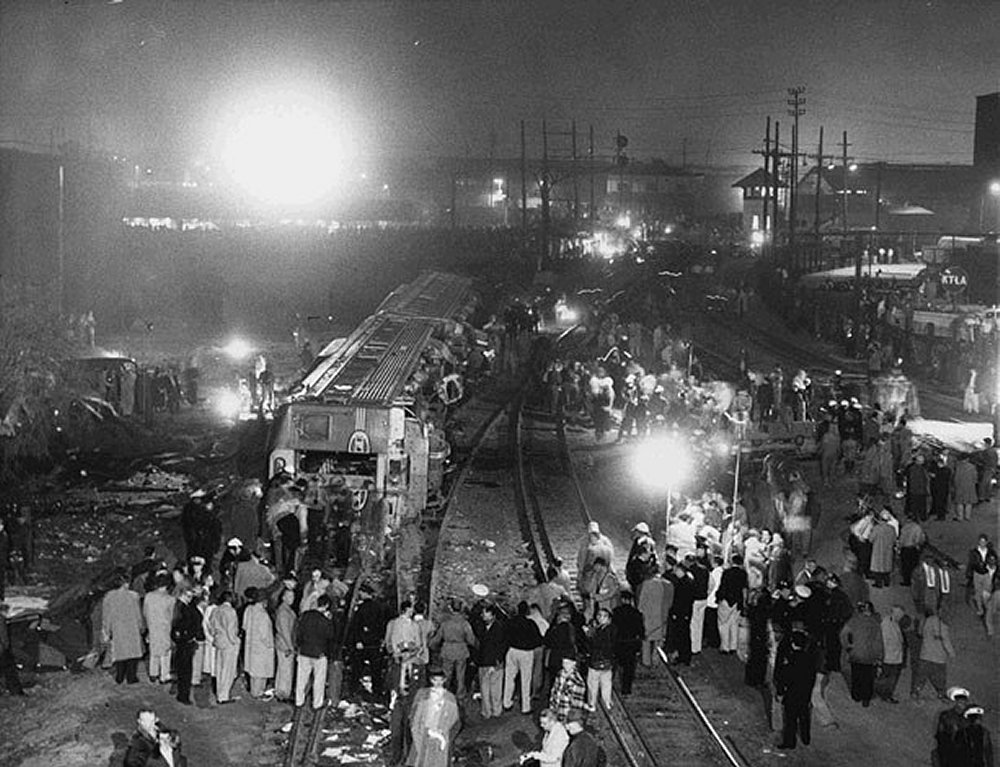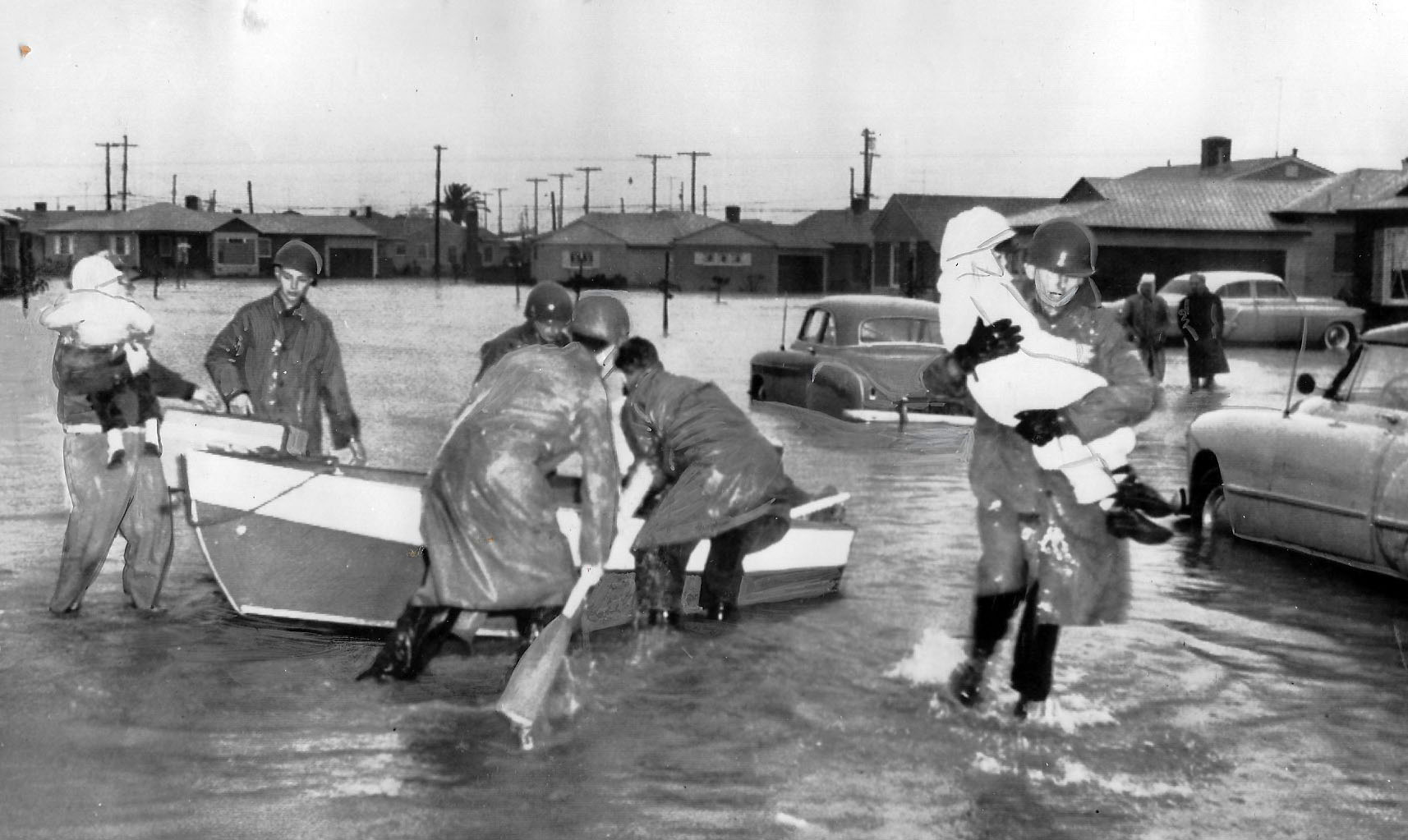
First was the tragic train wreck January 22, 1956, which claimed the lives of 30 people and left more than 130 others injured. Later that same week, an unprecedented eight-inch downpour flooded low-lying areas in Los Angeles County and forced evacuation of hundreds of families.
Fifty members of the 40th Signal Company had just returned to their armory after a full Sunday of firing on the rifle range when word of the rail- disaster reached them. Within 25 minutes, the company was on the scene of the accident to aid in rescue and police operations.
When they were finally released at 11.30 p.m., the signalmen had been on continuous duty since 5.30 a.m. and had eaten nothing since their noon luncheon on the range.
The tragedy, which took place at 5.45 p.m. occurred when a San Diego-bound Santa Fe passenger train left the tracks only a few minutes after leaving Los Angeles Union Station.
An emergency plea was made by Los Angeles police through radio and television stations for ambulances, doctors and other emergency experts.
Upon request of the police department, Captain Edward Bogenschild took his 41) men and officers, and nine vehicles, to the crash scene.
Under police supervision, the guardsmen formed a cordon around the overturned train to hold back the hordes of sightseers and others whose morbid curiosity brought them to the scene.
It was a grisly baptism for some of the younger guardsmen, with only a few weeks of service under their belts. Dead and dying were scattered along 200 yards of track, their bodies horribly mangled. Guardsmen not working as part of the human chain around the train patrolled the area and drove away several persons who apparently were attempting to carry away personal belongings of the victims.
Observers praised the guardsmen for their performance and later said the 40th troops represented the "only organized police activity" until rescue operations were well under way: Their job throughout the long evening was complicated by a lack of central control of rescue operations.

An overnight deluge had filled many low-lying areas the evening before and the rain was continuing. Machinery was set in motion, both in Los Angeles and Sacramento, to give assistance to southland communities whose local emergency crews were inadequate for rescue needs.
Before the rain ended Friday, at least four units had been called on to provide aid.
The 132d Armored Engineer Battalion (now 578th Brigade Engineer Battalion) placed two companies on state active duty. In all, they totaled about 90 officers and men and they stayed on active duty from Thursday afternoon, January 26th, until the next day.
Company E assisted authorities in Torrance in clearing debris from a badly overloaded flood channel, in evacuating more than 30 stranded families and in guarding the evacuated areas against looting. Company B performed similar service in Manhattan Beach. In Arcadia, eight men were called for one-day duty to aid in evacuation of flood-stranded civilians. They were members of the 215th Armored Field Artillery Battalion. Full-time personnel of Inglewood's 111th Reconnaissance Battalion were pressed into service along with their heavy vehicles to transport nurses and other key personnel.
State authority had been given to call as many as 400 men if the need arose in other areas but floodwaters receded before they were needed.
Source: 1956-1958 Biennial Report of the Adjutant General of the State of California